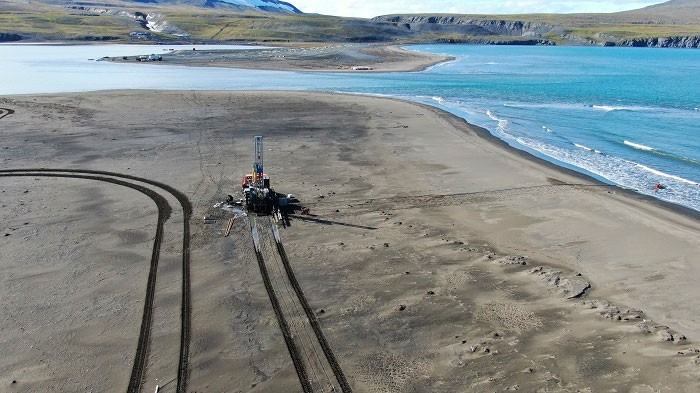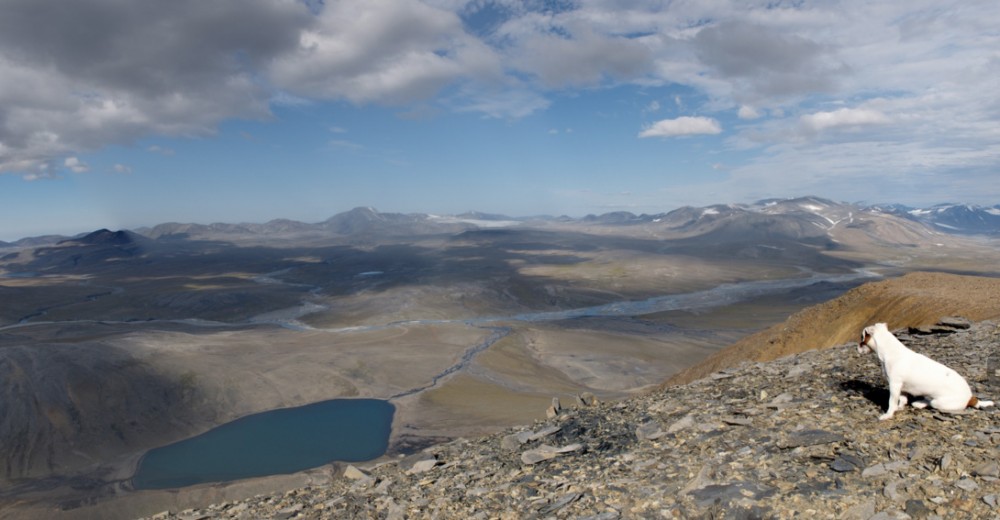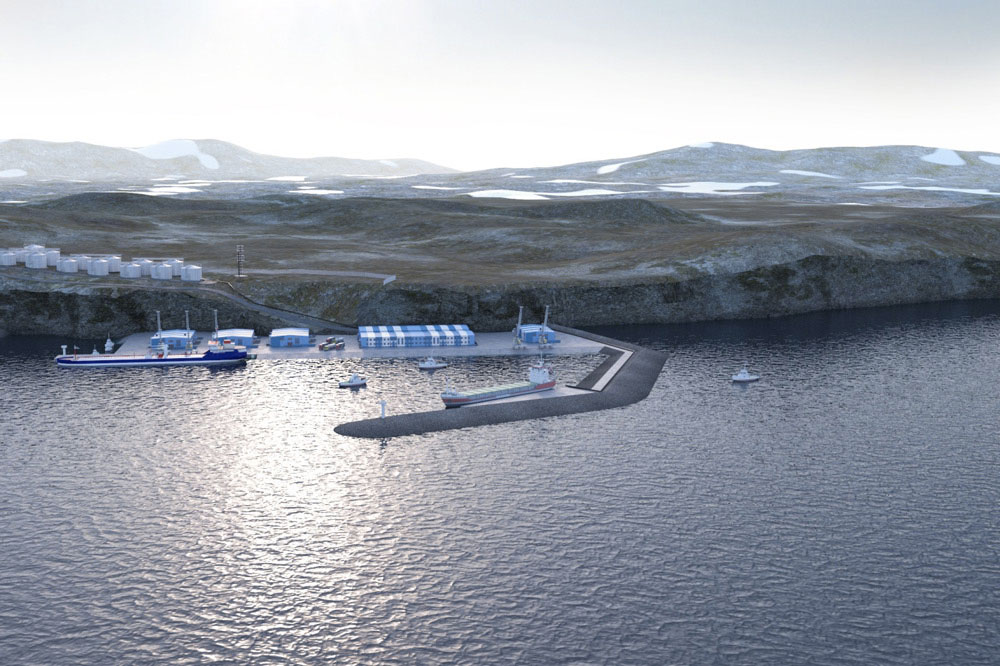Near Russia's main nuclear weapons test area comes heavy metals mine

The Pavlovsky mine will be located near nuclear weapons testing areas in Novaya Zemlya. Photo: First Ore Mine Company
Nuclear power company Rosatom gets final state approval for its zinc and lead mine in Arctic archipelago of Novaya Zemlya.
By Atle Staalesen
December 06, 202
Russia’s state expert appraisal company Glavgosexpertisa has officially approved the building of an ore processing plant in the far northern Novaya Zemlya.
The new mine will be located only few kilometres from areas extensively used for nuclear weapons testing until 1990. Novaya Zemlya is closed military area strictly controlled by the Russian Armed Forces.
Interestingly, Glavgosexpertisa marks its press release about the approved project with a “Z,” the symbol used by Russia in its war against Ukraine.
A major industrial development is now coming up in the remote island.
“This positive decision allows the First Ore Mining Company to start the development of the Pavlovskoye project,” representatives of the company inform.

The Pavlovsky mining area. Photo: pgrk.armz.ru
The mine will be located in the southern of the two islands, and is projected to produce an annual of 220,000 tons of zinc concentrate and 50,000 lead concentrate. The ores will be extracted from an open pit.
The First Ore Mining Company is a subsidiary of Rosatom, Russia’s state nuclear power company.
From before, Glavgosexpertisa has approved the building of a project seaport in Bezimyannaya Bay on the shore of the Barents Sea. It will have capacity to handle up to 500,000 tons of goods per year.

The mine will be located in the southern of the two islands, and is projected to produce an annual of 220,000 tons of zinc concentrate and 50,000 lead concentrate. The ores will be extracted from an open pit.
The First Ore Mining Company is a subsidiary of Rosatom, Russia’s state nuclear power company.
From before, Glavgosexpertisa has approved the building of a project seaport in Bezimyannaya Bay on the shore of the Barents Sea. It will have capacity to handle up to 500,000 tons of goods per year.

The projected seaport on coast of Barents Sea.
Picture by Eleron.ru
The Pavlovskoye mine holds a total of 19 million tons of ore, from which 620,000 tons of zinc, 131,000 tons of lead and 9,4 million ounces of silver can be extracted, Rosatom’s project development company VNIPIpromtekhnologia informs.
According to the project developers, a total of 7 alternative sites for the industrial facilities have been assessed along with as many as 28 alternative configurations for the seaport complex. Environmental considerations have been crucial, CEO Andrei Gladyshev explains.
“We have undertaken a big work to coordinate the project, including with environmental organisations, so that the construction works will not harm the environment,” he says.
Preparations for the mining operations have been going on for years. In the summer of 2018, engineers conducted preparatory works on site. A drilling rig collected sea bottom samples and there were also made assessments of the projected land-based parts of the terminal.
Rosatom originally planned to start production already in 2019.
Between 1973 and 1975, the southern island of Novaya Zemlya was used extensively for larger underground nuclear tests. Of the seven detonations that took place in the area, several ventilated radioactive gases to the atmosphere because the explosions were not deep enough in the ground.
From 1976 to 1990, all underground nuclear tests took place at the northern test-range in the Matochin Straight. Since 1990, only so-called sub-critical nuclear tests have been conducted at Novaya Zemlya.
Among the nuclear devices tested in the area is also the 58 megatons atmospheric hydrogen “Tsar-bomb” detonated on October 30, 1961.
This story is posted on the Barents Observer
The Pavlovskoye mine holds a total of 19 million tons of ore, from which 620,000 tons of zinc, 131,000 tons of lead and 9,4 million ounces of silver can be extracted, Rosatom’s project development company VNIPIpromtekhnologia informs.
According to the project developers, a total of 7 alternative sites for the industrial facilities have been assessed along with as many as 28 alternative configurations for the seaport complex. Environmental considerations have been crucial, CEO Andrei Gladyshev explains.
“We have undertaken a big work to coordinate the project, including with environmental organisations, so that the construction works will not harm the environment,” he says.
Preparations for the mining operations have been going on for years. In the summer of 2018, engineers conducted preparatory works on site. A drilling rig collected sea bottom samples and there were also made assessments of the projected land-based parts of the terminal.
Rosatom originally planned to start production already in 2019.
Between 1973 and 1975, the southern island of Novaya Zemlya was used extensively for larger underground nuclear tests. Of the seven detonations that took place in the area, several ventilated radioactive gases to the atmosphere because the explosions were not deep enough in the ground.
From 1976 to 1990, all underground nuclear tests took place at the northern test-range in the Matochin Straight. Since 1990, only so-called sub-critical nuclear tests have been conducted at Novaya Zemlya.
Among the nuclear devices tested in the area is also the 58 megatons atmospheric hydrogen “Tsar-bomb” detonated on October 30, 1961.
This story is posted on the Barents Observer
No comments:
Post a Comment